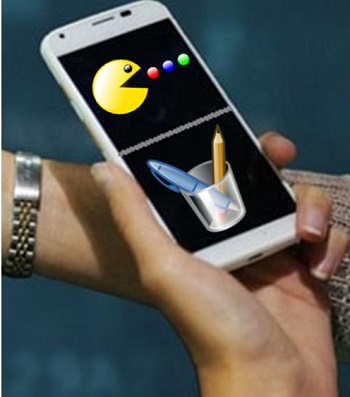A hidden multi-window mode has been identified and is stirring rumors over possible “Desktop Android” operating system.
While it’s too early to know for certain what Google has up its sleeves, there has been a recent wave of reports suggesting that Android N includes code that would make it possible to run a device in a split-screen mode that would make it possible to run two different applications, side by side.
This is a long awaited feature that is especially desirable for multitasking when using a tablet.
That said, if the reports are to be believed, it appears as though Google is trying to take things beyond that level. Buried within the multi-window code of Android N are mentions of an “experimental freeform windows” mode. The references to that mode occur several times within one of the major system files in Android, the “framework-res.apk”. Within that file, the list of strings occurs next to other options in the “Developer Settings” screen.
Those precise strings also appear in a range of other locations in Android N, as well, such as the SetupWizard and the SystemUI.
 That said, the primary place appears to be the framework, which also contains different references to a “maximize” and “close” button which would be a requirement in this type of multi-screen feature. That said, there is reference to “recents freeform workspace” within the SystemUI, which likely notes the list of recently used applications.
That said, the primary place appears to be the framework, which also contains different references to a “maximize” and “close” button which would be a requirement in this type of multi-screen feature. That said, there is reference to “recents freeform workspace” within the SystemUI, which likely notes the list of recently used applications.
Certain projections have suggested that it will have a resemblance to Remix OS (which is a third party form of Android that is meant for laptops and desktops) or display showing multiple windows as is the case in Samsung smartphones. Therefore, several Android apps would be able to be viewed on a device screen all at the same time. They would be contained within floating windows, mirroring the desktop operating system experience.
The split-screen mode that is reported to be a part of Android N require mobile apps to be resizable as the user needs it. Once the apps can be contained in smaller and larger windows, it won’t be long before the rest of a completely windowed OS can be created.
These files are now created with Word indexes and simplify compatibility issues for new and legacy documents.
Users of Google Docs now have a new feature available to them, as they are able to use EPUB format when they export their documents, including the ability to convert Word indexes into chapter lists that can be clicked by the viewer.
This announcement was made rather quietly, earlier this month by the team at Google Apps.
The introduction of the new Google Docs feature may have seemed like a rather quiet one, but it could represent a considerable step forward in making it possible for a spectrum of new and legacy documents to be accessible from one device to the next. Since the EPUB format has become a common format for everything from textbooks to young adult fiction novels and even academic treatises, it was a natural fit for this new feature. The format is appealing due to its ease of compatibility as well as the reliability of its hyperlinked chapter indexes created through standard word processing software such as Microsoft Word.
This format allows Google Docs to better cater to the use and exporting of longer works such as novels.
 Unlike when Word documents are uploaded as a Google Doc file, viewable in GDocs, where the indexes originally created in the .doc file may not work (that is, by clicking a chapter, the viewer will not be automatically brought to that page), when it is exported as an EPUB, the chapter indexes are all completely preserved. This makes for a much more convenient reading experience and can be very important when viewing a longer document.
Unlike when Word documents are uploaded as a Google Doc file, viewable in GDocs, where the indexes originally created in the .doc file may not work (that is, by clicking a chapter, the viewer will not be automatically brought to that page), when it is exported as an EPUB, the chapter indexes are all completely preserved. This makes for a much more convenient reading experience and can be very important when viewing a longer document.
EPUB, itself, is based on the XML publication standard and is both free and open. Its standard was ratified by the International Digital Publishing Forum and overcomes many of the barriers and limitations presented by certain other common formats such as Adobe’s PDF which can lead to a more cumbersome reading experience, particularly when shifting from one device to the next.
It is likely that this could become a highly popular feature in Google Docs and could present a way to translate full libraries of legacy Word-based documents into a more modern and compatible cross-device format.
 That said, the primary place appears to be the framework, which also contains different references to a “maximize” and “close” button which would be a requirement in this type of multi-screen feature. That said, there is reference to “recents freeform workspace” within the SystemUI, which likely notes the list of recently used applications.
That said, the primary place appears to be the framework, which also contains different references to a “maximize” and “close” button which would be a requirement in this type of multi-screen feature. That said, there is reference to “recents freeform workspace” within the SystemUI, which likely notes the list of recently used applications.
 Unlike when Word documents are uploaded as a
Unlike when Word documents are uploaded as a 